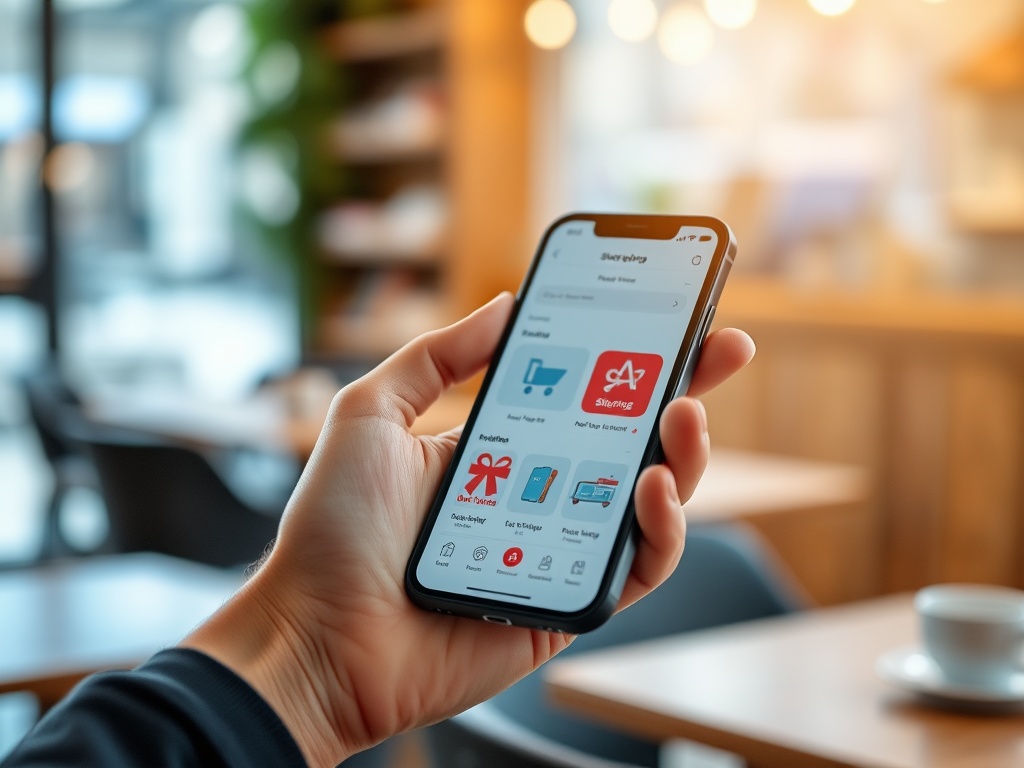In the UK, smartphone users are spending an average of nearly four hours a day on their devices, which translates into a constant exposure to a plethora of eye-catching advertisements across social media platforms. This relentless exposure often leads to impulsive spending habits. A recent study revealed that Britons allocate approximately 9 percent of their income to online purchases—both via mobile and desktop—significantly outpacing the spending habits of Americans and the French, who spend less than half of that amount.
While we are adept at making quick purchases online, the question arises: when it comes to significant expenditures—such as booking an Airbnb, purchasing flights, or investing in a new television—do we prefer to make these transactions on our phones or switch to a laptop? Interestingly, a YouGov survey conducted in September 2024 found that only 18 percent of respondents were comfortable making substantial purchases via their phones, while 42 percent preferred using a computer. The remaining 34 percent indicated that it didn’t matter to them either way.
Is There a Difference?
The ease of mobile shopping is undeniable. With marketing strategies that create a sense of urgency—such as messages indicating limited availability (“only three rooms left at this price!”)—consumers often find themselves swayed by impulsive decisions. The convenience of shopping on the go means we can easily fall prey to these marketing tactics.
As Jamal Ahmed, a lead consultant at Kazient Privacy Experts, explains, brands frequently offer app-exclusive deals to drive mobile engagement. Many have experienced the allure of scrolling through Instagram only to be tempted by a mobile-specific discount (“sign up for 15 percent off!”). In theory, one could begin their search for a product on a computer and then compare prices on their phone to find better deals.
Although discounts may also be available on laptops, consumer expert Martyn James points out that companies are increasingly incentivizing purchases through apps, as this provides them with greater visibility and potentially more data on consumer behavior.
The Risks of Mobile Shopping

Innovations in mobile shopping—like one-click payments, saved payment information, and targeted advertisements—have streamlined the purchasing process on smartphones. While this ease can lead to faster transactions, it also raises the likelihood of impulse purchases that may be regrettable later. Retailers understand that mobile shopping is often about seizing spontaneity. Once they capture your attention, they bombard you with offers to complete the sale.
This impulsive nature is particularly concerning when making significant purchases. For instance, if you are buying a sofa, you need to ensure it fits in your space and that you can afford it. Making a purchase on a phone can sometimes mean missing out on vital information, as mobile screens limit the amount of content displayed. On a laptop, shoppers typically take more time to read and analyze information before making a decision, whereas mobile users may be whisked straight to the checkout with little opportunity for evaluation.
Price comparisons are also more challenging on mobile devices, and there’s always a risk that navigating away from an offer could result in losing it. From a security standpoint, Jamal highlights that mobile transactions can be more susceptible to threats such as malware, phishing, and unsecured Wi-Fi networks. Furthermore, the small screen size may cause users to overlook important details, and apps often require access to more personal data than traditional websites.
Protecting Yourself While Shopping
Regardless of the device you choose for making significant purchases, there are several ways to safeguard yourself and your finances:
1. Use Guest Checkout or Implement Security Measures
Whether shopping on a phone or a desktop, Jamal recommends opting for guest checkout. While this method may be less convenient—since your payment information is not saved—it provides added protection in the event your data or device is compromised. This approach also helps you avoid unwanted marketing emails that may follow you long after a purchase decision.
2. Create a Ghost Email Address
Martyn suggests setting up a separate email address specifically for online shopping, sign-ups, or loyalty programs. This strategy allows you to consolidate all promotional offers in one place. If you decide to make a purchase, you can easily search through this email for relevant discounts while minimizing the temptation to buy impulsively.
3. Don’t Hesitate to Walk Away from Offers
Although many apps imply that discounts are fleeting, Martyn reassures that this is often not the case. If you log out and return to the app later, you may find the same offer waiting for you. Therefore, it’s wise to evaluate if the deal is truly advantageous and if the purchase aligns with your needs and budget.
4. Ensure Contact Information is Available
Martyn emphasizes the importance of verifying that you have a clear and straightforward way to contact the retailer. Most online purchases come with a 14-day return policy, but this is only viable if you can reach out to the company. If a retailer does not provide a means of contact, consider it a red flag and refrain from completing the transaction.




